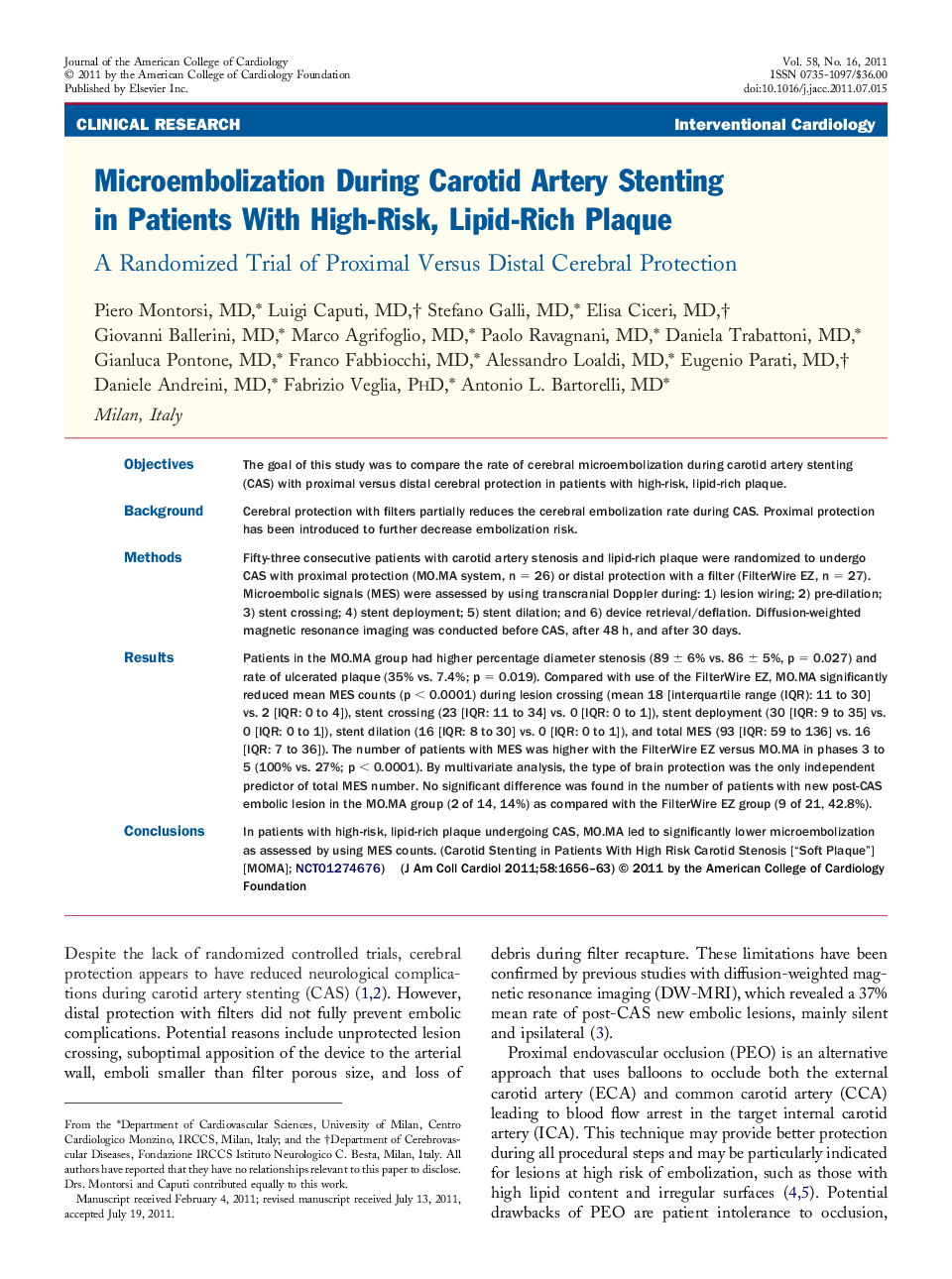| کد مقاله | کد نشریه | سال انتشار | مقاله انگلیسی | نسخه تمام متن |
|---|---|---|---|---|
| 2947673 | 1577243 | 2011 | 8 صفحه PDF | دانلود رایگان |

ObjectivesThe goal of this study was to compare the rate of cerebral microembolization during carotid artery stenting (CAS) with proximal versus distal cerebral protection in patients with high-risk, lipid-rich plaque.BackgroundCerebral protection with filters partially reduces the cerebral embolization rate during CAS. Proximal protection has been introduced to further decrease embolization risk.MethodsFifty-three consecutive patients with carotid artery stenosis and lipid-rich plaque were randomized to undergo CAS with proximal protection (MO.MA system, n = 26) or distal protection with a filter (FilterWire EZ, n = 27). Microembolic signals (MES) were assessed by using transcranial Doppler during: 1) lesion wiring; 2) pre-dilation; 3) stent crossing; 4) stent deployment; 5) stent dilation; and 6) device retrieval/deflation. Diffusion-weighted magnetic resonance imaging was conducted before CAS, after 48 h, and after 30 days.ResultsPatients in the MO.MA group had higher percentage diameter stenosis (89 ± 6% vs. 86 ± 5%, p = 0.027) and rate of ulcerated plaque (35% vs. 7.4%; p = 0.019). Compared with use of the FilterWire EZ, MO.MA significantly reduced mean MES counts (p < 0.0001) during lesion crossing (mean 18 [interquartile range (IQR): 11 to 30] vs. 2 [IQR: 0 to 4]), stent crossing (23 [IQR: 11 to 34] vs. 0 [IQR: 0 to 1]), stent deployment (30 [IQR: 9 to 35] vs. 0 [IQR: 0 to 1]), stent dilation (16 [IQR: 8 to 30] vs. 0 [IQR: 0 to 1]), and total MES (93 [IQR: 59 to 136] vs. 16 [IQR: 7 to 36]). The number of patients with MES was higher with the FilterWire EZ versus MO.MA in phases 3 to 5 (100% vs. 27%; p < 0.0001). By multivariate analysis, the type of brain protection was the only independent predictor of total MES number. No significant difference was found in the number of patients with new post-CAS embolic lesion in the MO.MA group (2 of 14, 14%) as compared with the FilterWire EZ group (9 of 21, 42.8%).ConclusionsIn patients with high-risk, lipid-rich plaque undergoing CAS, MO.MA led to significantly lower microembolization as assessed by using MES counts. (Carotid Stenting in Patients With High Risk Carotid Stenosis [“Soft Plaque”] [MOMA]; NCT01274676)
Journal: Journal of the American College of Cardiology - Volume 58, Issue 16, 11 October 2011, Pages 1656–1663